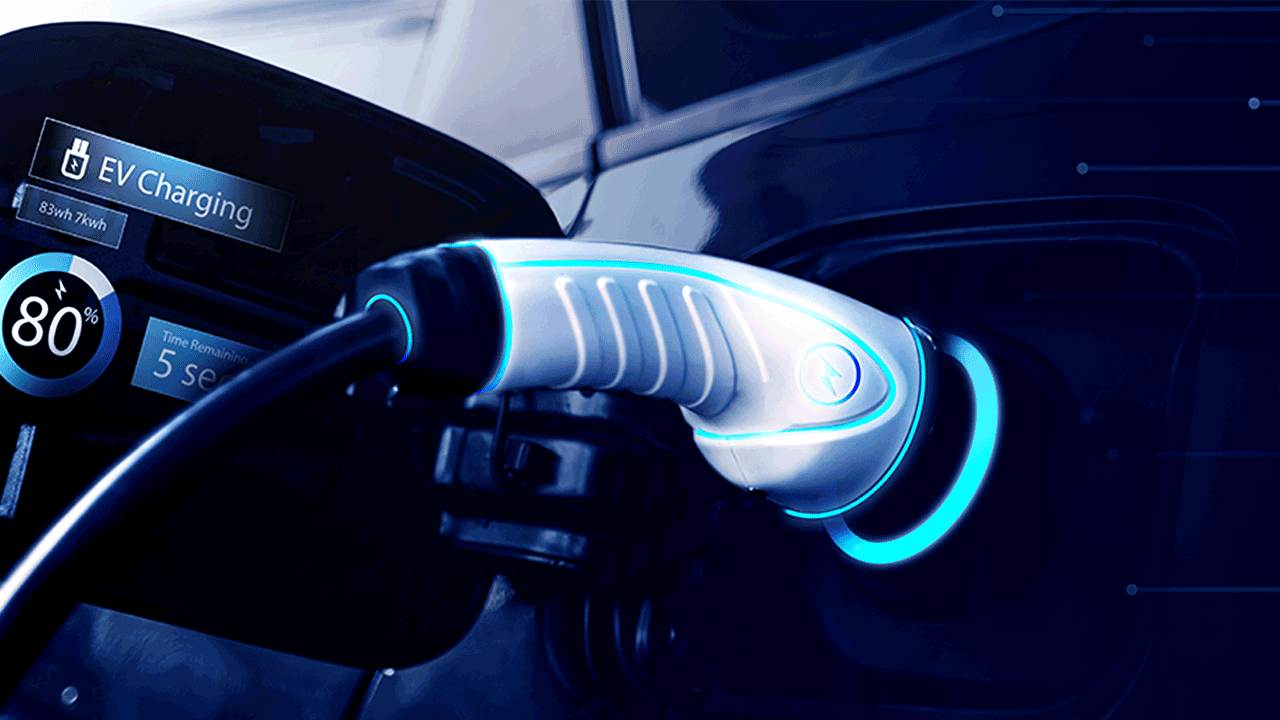Electric Vehicle Testing Equipment
Electric vehicle testing equipment and tools The rapidly increasing integration of embedded electronic control units (ECUs) in nearly every onboard...
Unlock Engineering Insights: Explore Our Technical Articles Now!
Discover a Wealth of Knowledge – Browse Our eBooks, Whitepapers, and More!
Stay Informed and Inspired – View Our Webinars and Videos Today!

While glancing into the future of automotive and identifying the potential opportunities, challenges, success, and failure the industry should encounter while shifting toward electrification, electric vehicle (EV) telematics will continue to be a vital process. The rise in data dependency within automotive is a widely acknowledged notion, but it is still so critical that it is worth reemphasizing again—especially as the industry navigates through the early stages of a new, electrified era. Sophisticated vehicles can achieve and maintain efficient operability while adhering to safety performance standards because of the telematics and analytics involved in the product development process. The importance of pulling information through telematics will grow in parallel to the complexity of EV development both now and in the future because telematics may become more complex as more data is accessed and utilized. The EV market is becoming a driving force regarding where the industry is shifting toward, meaning that telematics, along with a meticulous analytics plan, will add valuable context to the information collected in products’ software and integrated technology systems. To maintain the development of safety-optimized vehicles with advanced technology, telematics is a needed asset.
The role of telematics in automotive in the past few decades has been significant and continues to remain an important aspect of product development. With the continuous integration of assistive technology—most notably, advanced driver assistance systems (ADAS)—telematics testing has led to the proper validation of multiple sophisticated vehicle systems and features. Telematics can be described as a combined branch of information technology (IT) and telecommunications that focuses on sending, receiving, and storing information via telecommunication devices. It should also be viewed as something more significant than just that. On one side, telematics often expands into “agents” or codes that organizations can create for their customers to extract the data from their assets. The other side telematics often expands to is the development of a Visualization Layer, which allows organizations to make sense of certain information in both a compelling and specifically tailored way, leading toward actionable decision-making.
EV telematics can be defined in the same manner as the general form of telematics in automotive but adjusting the scope to a lens of electrification. Again, with the way the automotive world is evolving, the data-relevant side of product development, software, and technology advancement will remain a key factor in how organizations can grow and succeed in the future. More specifically, transitioning to an EV-focused industry should boost the demand for EV telematics solutions designed for providing organizations with valuable information and extensive data insights.
Though the mass implementation of EVs plans to positively impact the environment by reducing global oil dependency, there are immediate constraints—range anxiety, for example. Other external factors will affect the optimization of EV telematics, simply because they also directly affect other processes within electrification. Though, range anxiety reflects the concern about EV battery life efficiency, which is important considering the currently limited access to EV charging infrastructures. Though telematics may not eliminate range anxiety, it is a solution tool that should alleviate this concern. There are additional organizational benefits that telematics can provide, but before examining them, it will be worth discussing how EV telematics work altogether.
Undergoing the process, or methodology, of EV telematics can be both iterative and continuous. When organizations prioritize their data by applying a proper telematics solution, gathering the different kinds of vehicle data is merely the first step. The connected telematics device integrated into the vehicle will communicate that information. This device is often referred to as a “black box,” which is interconnected via a CAN bus. It also includes a modem and SIM card that allows for communication. The black box transfers the data and stores it in the cloud to display the information visually. Organizations can access that information via whatever telematics software/application they use. This cyclic exchange is where analytics can be applied, which could be considered one of the more important aspects of telematics altogether.
The good thing about telematics is, depending on the organization, there are multiple applications to use. Some teams may use Azure, while others may use Amazon Web Services. Nonetheless, organizations will want to use something that best stores its data points in the cloud. By displaying data points in charts, or any other visuals, all of that valuable information can be identified and extracted. Organizations can then develop thorough analytical insights, which allows them to make decisions as they see fit. This telematics process, or journey, will look similar to many of those who go through it. Again, there are particular ways to approach this process in a way that best reflects organizational needs, but in essence, information is pulled, stored, and transformed into actionable data. This journey directly influences how organizations utilize telematics for product development, which will continue to be a critical asset as OEMs produce new EV models.
Since the telematics device has connectivity to the vehicle, including hardware and sensors, it can display EV data on things like battery life, trip distance/time, speed, acceleration, global positioning systems (GPS), and vehicle maintenance components. In addition, telematics directly connecting to EV subsystems and the testing involved allows for more efficient subsystem interaction altogether. For example, the infotainment subsystems constructed in an EV will most likely grow in complexity to maintain the growth of innovative technology that enables more advanced driver usability. Another example would include vehicle components such as dash cameras, which is a key assistive driver feature that will most likely continue to be integrated into EV models in the future. Overall, the CAN bus allows several different components to communicate and transmit data. It can be viewed as a highway where all of that information travels.
EV telematics will play a critical role in both the software and system integration involved in the products’ overall development process, along with how the EV market can evolve the future of automotive. EV charging, which is an entire topic within itself, is one prime example of how far the telematics journey can extend. In addition, there are several considerations the industry has yet to identify for the future of automotive electrification. Some problems cannot be anticipated or predicted, which could reveal a more vital demand for EV telematics and analytics. Capturing and reporting large amounts of data within connected EV systems offers benefits for the electrified vehicles OEMs hope to develop.
So, what overall benefits do telematics add to the development of EVs? The most immediate benefit that EV telematics can add is turning an organization’s vehicle data into available assets because the context of that data allows them to take actions based on it. More times than others, the context of this information provides evidence that justifies certain decisions that are being made. Overall, this contextual evidence eliminates the chance of any ambiguity or confusion in the process. The integration of telematics in vehicles has provided easily accessible software and features that help improve several other aspects of organizational activity. Areas like product safety, performance, and environmental sustainability can all be directly affected by telematics.
Within product safety, telematics devices inside an EV can collect information pertinent to safety. For instance, in the chance of a crash or collision, vehicles can help request emergency assistance based on the information telematic devices gather to identify crisis. In addition, telematics can gather and report significant data on driver behavior, such as moments of sharp braking and intense acceleration. The resource of internet connectivity can even improve vehicle usability when programmed into the telematics system; real-time notifications surrounding navigation, texting, weather tracking, and news reports connect back to product and user safety. These different safety aspects will especially be critical considering the development of newer EV models should include autonomous-based assistive features. Tracking a vehicle’s performance and productivity provides several benefits as well. Telematics systems should be able to report vehicle diagnostics, displaying a vehicle’s health status in real time. For EVs, this is important because EV telematics can monitor battery life and range. Gathering this performance data is another way to reduce the chance of breakdowns and to maintain proper risk management overall.
One of the primary concerns electrification hopes to address is environmental impact, so collecting data relevant to sustainability is another advantageous element of EV telematics. Whether displaying battery life, battery temperature, or range, sustainability data will provide relevant information that could lead to thorough analytics. Also, EV subsystems and components testing may rely on telematics software and systems to improve the steps involved in that process. Overall, newer vehicles require more high-level software capabilities and should be incorporated into EVs over the next decade. This may increase the amount of code and programming vehicular software has, which adds another layer of complexity to EV development. So, the additional lines of code will cause an increase in complexity, along with the level of integration required altogether.
EV telematics is one particular aspect of a larger electrification picture, and there are numerous things to consider. Starting with the EV market as a whole, the potential cost of new EVs may create disparities in the consumer market. It is obvious that a handful of supply chain issues have derived from the pandemic, and its lingering hazards may continue to create disruptions as OEMs and suppliers try to recover from certain organizational setbacks. Depending on how the industry can progress in the next decade, the development of EV models could either get off to a slow start or move at a brisk pace. Either way, that could affect the implementation of telematics systems into electrified vehicles.
In addition, the growth of EV transportation devices may not just include electric cars and hybrids. OEMs have already started advertising their new electrified trucks, which has raised eyebrows about what additional electrified vehicles can be made. The industry could lean toward the development of electrified motorbikes, as well as electric semi-trucks and/or service vehicles. The first step would be achieving electrification and the mass implementation of EVs, but exploring these potential possibilities can create concerns about how EV telematics will be addressed with this added layer of known and unknown constraints. An increase in diverse EV transportation would also mean there would need to be an increase in EV load management support infrastructure. Again, this may include EV charging stations, as well as EV testing facilities, and battery manufacturers. Nonetheless, the development of these external electrification assets would be heavily dependent on data, opening up the opportunity for telematics and analytics.
As briefly noted previously, the telematics journey handles large amounts of data. That can be a concern in itself, but it raises the question of how different organizations can understand that information. Of course, if an organization does not know how to address its data it can reach out to other organizations that offer telematics services. Regardless, being aware of the amount of data present and understanding how to develop a proper telematics solution that leads to thorough analytics is an important note to consider. This leads to the impact security has on EV telematics and vice-versa. Certain security protocols apply to telematics—encrypted certificates and socket security layer (SSL), for example. Since telematics involves accessing large amounts of data and information, these standards are critical. Security is a prominent concern, but there are ways that a telematics structure can help adhere to particular security concerns.
For example, a telematics team could have three layers—the database (storage layer), the web application programming interface (API) [the middle layer], and the web application (the client layer). Having the Web API as a middle layer prevents unauthorized data access, which can be caused by connecting the database directly to the web app that the client has access to. This is because Web API should comply with OAuth 2.0, which is another industry-standard security protocol. Encryption at rest is another security protocol encryption that protects the information stored in the telematics database or the hard drives in the cloud. It is evident that security is necessary for telematics, so it is worth noting the current protocols for telematics in order to understand how these complications can change as EV telematics develops in the future.
Security will not only affect the telematics process but will also influence the overall security defense mechanisms integrated into advanced vehicle software. With the initial progress being made in systems like ADAS, EV telematics should help take additional steps further in what assistive driver features are integrated into EVs. This would also be true not only for conventional vehicles in the market today but also for autonomous vehicles planned ahead. Fully autonomous vehicles are what the industry hopes to make in the future. EV telematics will still have to address the list of concerns currently being identified before reaching that point.
Over the next decade, EV telematics in automotive is likely to evolve. There is no sure way to express a timeline or indicate what milestones will be achieved, but growth should occur, nonetheless. Exploring the capabilities that telematics and analytics can provide for modern transportation has opened a door that will be hard to close. Organizations should continue investing in a proper telematics solution, especially as the path toward electrification intensifies, because there will never be such a thing as too much data.
Overall, an efficient telematics solution can guarantee three things for sure: no data loss, an organized security defense mechanism, and optimization for performance. Performance, especially, should be looked at as an art because only certain organizations will value this aspect of telematics. Even for organizations within the industry that may not need to implement telematics as often as others, the process should still be looked at as an insurance policy. Uncertainty is not a feeling many organizations will enjoy experiencing during certain processes and procedures, so telematics can help add visibility when unclear pieces of data lead to malfunctions or failures. The complexity of product development should increase as the industry attempts to make more sophisticated EVs with innovative technology—this will require the aid of tedious EV telematics and informational insights to ensure that these products are operating within their intended functionality.


Electric vehicle testing equipment and tools The rapidly increasing integration of embedded electronic control units (ECUs) in nearly every onboard...

Introduction As several OEMs continue to announce the release of their new electrified vehicles, one can only presume that the world of automotive is...

1 min read
What Are the Different Electric Vehicle Standards? Introduction Electrification is a process that has been around for decades. The history of the...